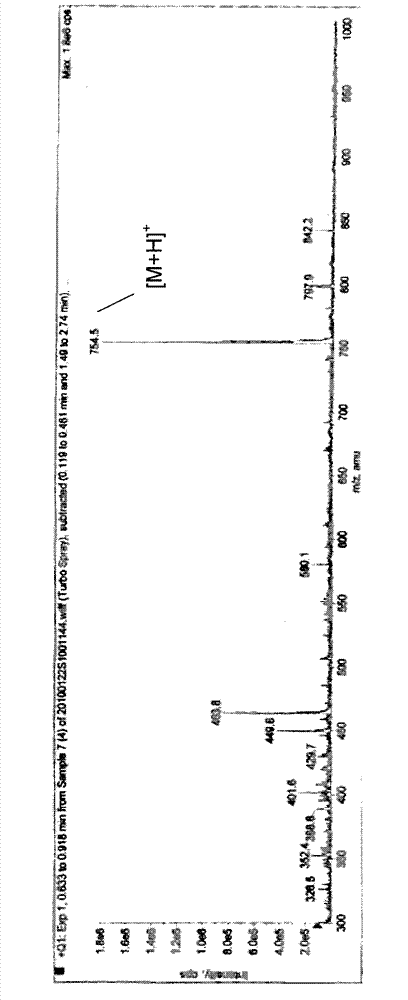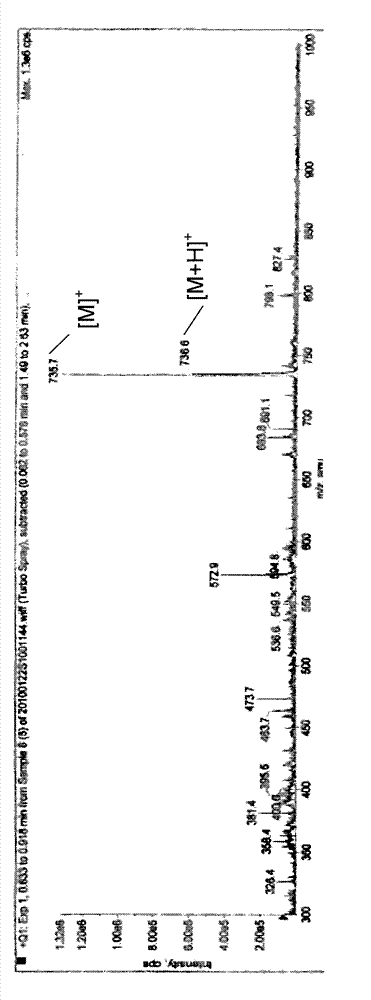Pseudo cyclic polypeptide and synthesis method and application thereof
A synthesis method and reactor technology, applied in the field of pseudocyclic polypeptides and their synthesis, can solve the problems of easy drug resistance, narrow antibacterial spectrum, and ineffectiveness, and achieve drug resistance, low hemolytic toxicity, simple and safe operation Effect
- Summary
- Abstract
- Description
- Claims
- Application Information
AI Technical Summary
Problems solved by technology
Method used
Image
Examples
Embodiment 1
[0040] Example 1 Preparation, separation and purification of antibacterial pseudocyclic polypeptide CHR-2
[0041] The structure of the antibacterial pseudocyclic polypeptide CHR-2 is shown in Formula I and Table 4, and it is synthesized in 4 steps.
[0042] (1) Cbz-NH(CH 2 ) 2 NH 2 Preparation: Dissolve 1.8g (30mmol) of ethylenediamine in 250mL of dichloromethane, stir well, cool to 0℃ in an ice bath, and then slowly add dropwise 10mL of dichloride dissolved in 10mmol of benzyloxycarbonyl chloride to this solution The methane solution takes about 1h. After the dripping is completed, continue to react overnight at 0°C. The ice bath was removed, the reaction solution was raised to room temperature, and the reaction was continued to be stirred for 2 hours. After the reaction, the white suspended matter was removed by filtration, the filtrate was washed with saturated sodium chloride aqueous solution (3×50 mL), dried with anhydrous sodium sulfate, the solvent was removed by rotary ev...
Embodiment 2
[0049] Example 2 Detection of antibacterial activity of synthetic antibacterial pseudocyclic polypeptide
[0050] The various strains used in the following examples were purchased from the China Institute of Biological Products.
[0051] The antibacterial activity of the synthesized antimicrobial peptides was tested by 96-well plate method. The specific steps are: resuscitate the bacteria, inoculate the slope and incubate overnight at 37°C, pick the bacteria in MH medium, cultivate overnight at 37°C, and dilute the bacterial solution. Its concentration is 10 4 ~10 5 CFU / ml, 100μl of bacterial solution per well was inoculated into 96-well plate, and then after the peptide was diluted in a certain proportion, 10μl was added to each well, the 96-well plate was incubated at 37℃ overnight, and the OD was measured by the microplate reader 570 value. The test results are listed in Table 5.
[0052] The growth concentration of bacteria containing antimicrobial peptides (OD 570 ) And the gro...
Embodiment 3
[0057] Example 3 In vitro hemolytic activity detection
[0058] This example is used to detect the hemolytic activity of synthetic antibacterial pseudocyclic peptides on human red blood cells, and the blood sample used is taken from normal human blood.
[0059] The specific detection steps are: human red blood cells are washed with PBS buffer solution (35mM phosphate buffer / 0.15mol / L NaCl, pH 7.0), and 100μl of 8% human red blood cell suspension is placed in a 96-well plate and added to each well After shaking 100 μl of antimicrobial peptide solution at 37°C for 1 hour, centrifuge at 1500 rpm for 5 min, transfer 100 μl of supernatant to a new 96-well plate, and detect the absorption at 414 nm wavelength with a microplate reader. The positive control uses 0.1% Triton X-100, and the negative control uses PBS. The test results are listed in Table 6.
[0060] The smaller the hemolysis rate value of the antimicrobial peptide in Table 6, the lower the hemolytic toxicity.
[0061] Table 6 ...
PUM
 Login to View More
Login to View More Abstract
Description
Claims
Application Information
 Login to View More
Login to View More - R&D
- Intellectual Property
- Life Sciences
- Materials
- Tech Scout
- Unparalleled Data Quality
- Higher Quality Content
- 60% Fewer Hallucinations
Browse by: Latest US Patents, China's latest patents, Technical Efficacy Thesaurus, Application Domain, Technology Topic, Popular Technical Reports.
© 2025 PatSnap. All rights reserved.Legal|Privacy policy|Modern Slavery Act Transparency Statement|Sitemap|About US| Contact US: help@patsnap.com



